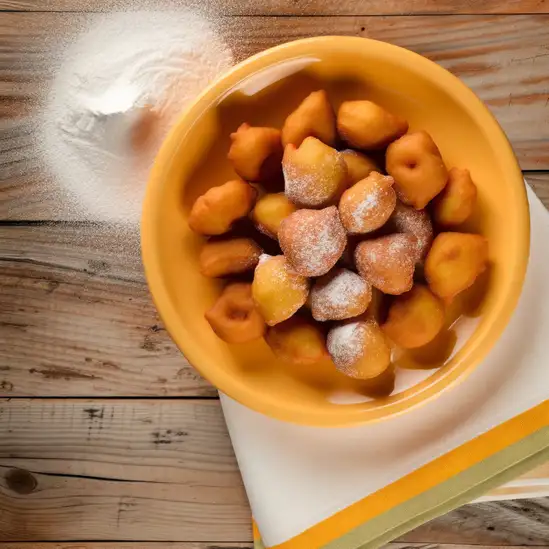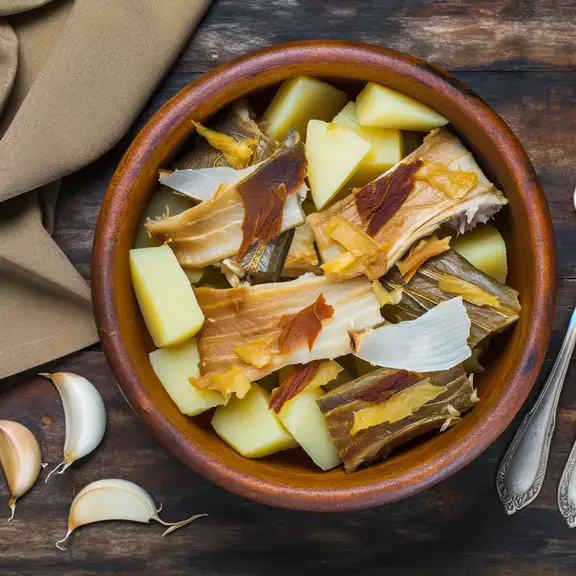



If you find yourself wandering through Gradska četvrt Gornji Grad - Medveščak,you’ll immediately notice a charming blend of old-world spirit and lively modern energy. It’s the kind of place where cobblestone streets lead you past colorful,historic buildings,their facades whispering stories of centuries gone by. The air carries a mix of fresh coffee aromas from cozy cafés and the faint scent of blooming linden trees,especially in the warmer months. There’s a gentle hum of life here—people chatting animatedly in outdoor markets,the clinking of glasses from local taverns,and the occasional street musician adding a soundtrack to your stroll. What really makes this neighborhood stand out is its character. It’s not just a place to see but a place to feel. You can lose yourself in the maze of narrow alleys,stumble upon quaint art galleries,or pause at a sunlit square to watch locals go about their day. The architecture is a fascinating mix—baroque churches,austere Austro-Hungarian buildings,and modern touches that blend seamlessly. It’s a neighborhood that wears its history proudly but embraces the present with open arms. And the food! Oh,the food here is a celebration of Croatian flavors—fresh pastries,hearty stews,and the kind of seafood that tastes like it was just pulled from the Adriatic. Grab a table at a small konoba,sip on a glass of local wine,and soak in the warm,welcoming vibe. Visiting Gornji Grad - Medveščak feels like stepping into a living storybook,one where every corner invites you to pause,explore,and savor the moment.
The information on this page is currently being reviewed by Tripkliq and should be used as a guide only
Eng word: Hello
Eng pronunciation: Bohk
Local language: Bok
Eng word: Goodbye
Eng pronunciation: Doh-vee-jen-ya
Local language: Doviđenja
Eng word: Thank you
Eng pronunciation: Hvah-lah
Local language: Hvala
Eng word: How much
Eng pronunciation: Koh-lee-koh
Local language: Koliko
Eng word: Toilet
Eng pronunciation: Toh-ah-let
Local language: Toalet
Eng word: Help me
Eng pronunciation: Poh-moh-zee mee
Local language: Pomozi mi
Eng word: Yes
Eng pronunciation: Dah
Local language: Da
Eng word: No
Eng pronunciation: Neh
Local language: Ne
Eng word: Excuse me
Eng pronunciation: Oh-proh-stee-teh
Local language: Oprostite
Gornji Grad, or the Upper Town, is one of the oldest parts of Zagreb, dating back to the medieval period. It is known for its charming cobblestone streets, historic buildings, and vibrant atmosphere.
St. Mark's Church is one of the most iconic landmarks in Gornji Grad. Its colorful tiled roof, featuring the coats of arms of Zagreb and Croatia, makes it a must-see for visitors.
The Lotrščak Tower, built in the 13th century, offers stunning panoramic views of Zagreb. Every day at noon, a cannon is fired from the tower, a tradition that dates back to the 19th century.
The Stone Gate is a well-preserved medieval gate that once served as the main entrance to the Upper Town. It houses a chapel with a painting of the Virgin Mary, which is believed to have miraculous powers.
The Croatian Parliament, located in the Upper Town, is the seat of the country's legislative body. The building itself is an architectural gem, reflecting the rich history of Croatian governance.
The Museum of Broken Relationships, located in Gornji Grad, is a unique museum that showcases personal objects from failed relationships, each accompanied by a story. It offers a poignant and often humorous look at human connections.
The Zagreb City Museum, situated in the Upper Town, provides a comprehensive overview of the city's history from prehistoric times to the present day. It is housed in a former convent and features a variety of exhibits.
The Mirogoj Cemetery, located near Gornji Grad, is one of the most beautiful cemeteries in Europe. It is known for its impressive arcades, sculptures, and lush greenery, making it a peaceful place to visit.
Tkalčićeva Street, often referred to as Tkalča, is a lively pedestrian street in Gornji Grad. It is lined with cafes, restaurants, and shops, making it a popular spot for both locals and tourists to relax and enjoy the atmosphere.
In Gradska četvrt Gornji Grad - Medvescak, the most common Power Adaptor is Type C, Type F.



A slow-cooked dish typically made with meat and vegetables, cooked under a bell-like lid covered with embers, resulting in tender and flavorful food.

Small, sweet doughnuts flavored with citrus and often sprinkled with powdered sugar, commonly enjoyed during festive seasons.

Cabbage rolls stuffed with minced meat and rice, simmered in a savory tomato sauce, popular during winter months.

A spicy, cured sausage made from pork, paprika, and various spices, often served as an appetizer or part of a charcuterie board.

A traditional cod dish, usually prepared with potatoes, garlic, and olive oil, often served during Christmas Eve.

A traditional Croatian dish made of dough filled with cheese, often served boiled or baked, and sometimes topped with sour cream.
If you ever find yourself wandering through Split,it’s like stepping into a living,breathing storybook where ancient history and vibrant modern life dance together effortlessly. The moment you stroll along the Riva promenade,the salty breeze from the Adriatic mingles with the aroma of fresh espresso and grilled seafood wafting from nearby cafés. Locals chat animatedly in the sun-dappled squares,their laughter blending with the distant hum of boats bobbing gently in the harbor. There’s a laid-back energy here that feels both timeless and alive,inviting you to slow down and soak it all in.
Split’s heart beats strongest in Diocletian’s Palace,a sprawling Roman fortress that’s less a museum and more a neighborhood where people live,shop,and gather. Walking through its ancient stone alleys,you’ll catch glimpses of colorful markets,artisan shops,and cozy taverns tucked into centuries-old walls. At night,the city transforms as lanterns flicker on,and the sound of live klapa singing—traditional a cappella harmonies—drifts through the air,wrapping you in a warm,soulful embrace.
What really makes Split unforgettable is how effortlessly it blends the old with the new. You can savor a plate of fresh octopus salad while watching fishermen haul in their catch,then wander to a rooftop bar for a cocktail as the sun sets behind the islands. It’s a place where every corner tells a story,every meal feels like a celebration,and every moment invites you to become part of its ongoing tale.
If you ever find yourself wandering through the sun-drenched streets of Dubrovnik,you’ll immediately feel like you’ve stepped into a living storybook. The city’s ancient stone walls rise proudly against the sparkling Adriatic,and as you stroll along the marble-paved Stradun,the salty sea breeze mingles with the scent of fresh pine and blooming bougainvillea. There’s a rhythm here—a gentle hum of life where history and modern charm dance together effortlessly.
Dubrovnik’s character is woven into every corner:the clatter of café cups,the murmur of locals chatting in cozy taverns,and the distant call of seagulls overhead. You can almost taste the city in the air—briny and fresh,with hints of grilled seafood and ripe figs from the markets. Sitting at a seaside restaurant,watching the sun dip behind the fortress walls,you’ll savor dishes bursting with Mediterranean flavors,paired with a glass of crisp Croatian white wine.
What makes Dubrovnik truly special is how it balances its rich past with a vibrant present. The city’s narrow alleys invite exploration,revealing tucked-away galleries,artisan shops,and lively squares where music spills out into the streets. Whether you’re tracing the footsteps of ancient mariners or simply soaking up the golden light on a quiet terrace,Dubrovnik feels like a warm embrace—inviting,timeless,and utterly unforgettable.
If you ever find yourself wandering the Dalmatian coast,Zadar is one of those places that sneaks up on you with its quiet charm and unexpected magic. The moment you step onto its ancient stone streets,there’s this warm,timeless feeling—like the city is gently humming a tune just for you. The salty breeze from the Adriatic mingles with the scent of fresh pine and blooming jasmine,wrapping around you as you stroll along the waterfront. It’s a place where history isn’t just in museums; it’s alive in the crumbling Roman ruins,the medieval churches,and the lively squares where locals gather to chat and sip coffee.
What really sets Zadar apart is its playful spirit. You’ll hear it in the waves as they dance through the Sea Organ,an extraordinary installation that turns the sea’s movement into haunting melodies. And just a few steps away,the Sun Salutation lights up the night with a mesmerizing display of colors,making the waterfront feel like a celebration of nature and art. Grab a seat on the stone benches,watch the sun dip below the horizon,and you’ll understand why Alfred Hitchcock once called Zadar the most beautiful sunset in the world.
The city’s vibe is relaxed but vibrant,with cozy konobas serving up fresh seafood and local wines that taste like the essence of the region. Whether you’re wandering through the bustling market,exploring narrow alleys,or simply soaking in the views from a café terrace,Zadar invites you to slow down,breathe deeply,and savor every moment.
If you ever find yourself wandering the Istrian coast,Pula is the kind of place that wraps around you like a warm,familiar hug. There’s this effortless blend of ancient history and laid-back seaside charm that makes the city pulse with life. Imagine strolling through streets where Roman ruins peek out from behind cozy cafes,their stone walls whispering stories of gladiators and emperors. The air carries a salty breeze mixed with the aroma of fresh seafood grilling nearby,and the chatter of locals and tourists blends into a lively,welcoming hum.
What really sets Pula apart is its character—it''s not just a city frozen in time but one that wears its history with pride while embracing the present. You’ll find yourself lingering in the shadow of the massive amphitheater,marveling at how it’s still so alive,hosting concerts and events that make the ancient stones vibrate with modern energy. The narrow alleys invite you to explore little artisan shops and family-run trattorias where you can savor Istrian truffles,fresh olives,and a glass of local Malvazija wine that tastes like sunshine.
Evenings in Pula have a special magic. The golden light softens the city’s edges,and the sea reflects a palette of pinks and purples. Sitting by the harbor,you can hear the gentle lapping of waves and the distant laughter from a nearby tavern. It’s a place that feels both timeless and alive,where every corner invites you to slow down,breathe in the moment,and soak up a culture that’s as rich as the land itself.
If you wander into Rijeka,you’ll immediately feel its pulse—a lively,salty breeze mingling with the hum of a bustling port city that’s unapologetically itself. It’s not polished like some of Croatia’s more famous coastal towns,but that’s exactly what makes it so magnetic. The streets buzz with a mix of locals chatting over coffee,the clatter of trams,and the occasional distant call of seagulls. You can almost taste the sea in the air,a briny freshness that pairs perfectly with a glass of local Malvazija wine at a cozy café.
Rijeka wears its history on its sleeve,from the grand Austro-Hungarian architecture to the colorful street art that pops up in unexpected corners. The city’s character is a blend of old-world charm and modern creativity,with a vibrant arts scene that spills into its festivals and galleries. Strolling along the waterfront,you’ll catch fishermen unloading their catch,the scent of grilled fish wafting from nearby taverns,and the laughter of families enjoying the evening.
What really sticks with you is Rijeka’s warmth—people here are genuine,proud of their city’s quirks and stories. Whether you’re exploring the lively market,climbing up to Trsat Castle for sweeping views,or simply soaking in the rhythm of the harbor,Rijeka invites you to slow down and savor its unique blend of sea,culture,and everyday life. It’s a place that feels like a well-kept secret,but one you’ll want to shout about once you’ve been.
If you wander into Šibenik,you’ll immediately feel like you’ve stepped into a place where history and the sea have been quietly chatting for centuries. The city’s old stone streets,worn smooth by footsteps over hundreds of years,invite you to slow down and soak in the atmosphere. There’s a gentle hum of life here—fishermen unloading their catch,the clinking of glasses from cozy waterfront cafés,and the distant call of seagulls mingling with the soft splash of waves against the harbor walls.
What makes Šibenik truly special is its blend of rugged Adriatic charm and rich cultural layers. The sun warms the limestone walls,making them glow golden in the late afternoon,while the scent of pine trees drifts in from the nearby hills. You can’t miss the stunning Cathedral of St. James,a masterpiece carved entirely from stone,where every detail tells a story. Wander through the narrow alleys,and you’ll find vibrant markets bursting with fresh figs,olives,and local cheeses that taste like sunshine.
Evenings in Šibenik have a relaxed,almost magical feel. The city lights flicker on,reflecting in the calm waters,and the air fills with the aroma of grilled seafood and herbs. Locals gather in lively taverns,sharing laughter and stories over glasses of crisp Croatian wine. It’s a place where time slows just enough for you to savor the simple pleasures—good food,warm smiles,and the endless blue horizon.
Scammers may install skimming devices on ATMs to steal card information from unsuspecting tourists.
Tourists may encounter individuals or unofficial exchange offices offering poor exchange rates or counterfeit currency.
Unlicensed individuals may pose as tour guides, offering subpar or misleading tours for high fees.
Some taxi drivers may overcharge tourists by not using the meter or taking unnecessarily long routes.
Crowded areas, such as markets or public transportation, are hotspots for pickpockets who target distracted tourists.
Certain restaurants may add extra items or hidden fees to the bill, especially if they sense the customer is unfamiliar with local practices.
Street vendors may sell counterfeit or low-quality goods at inflated prices, targeting tourists who are unaware of local market values.
The possession, use, and distribution of illegal drugs are strictly prohibited in Gradska četvrt Gornji Grad - Medveščak, Croatia. Penalties for drug-related offenses can be severe, including fines and imprisonment. Tourists should avoid any involvement with illegal drugs and be aware that even small quantities can lead to significant legal consequences. Prescription medications should be carried with a valid prescription and in their original packaging.
In Gradska četvrt Gornji Grad - Medveščak, Croatia, smoking is generally prohibited in enclosed public spaces, including restaurants, cafes, and public transportation. However, some establishments may have designated smoking areas. Smoking is also restricted in certain outdoor areas, such as playgrounds and school premises. Tourists should look for 'No Smoking' signs and adhere to local regulations to avoid fines.
Vaping is subject to similar regulations as smoking in Gradska četvrt Gornji Grad - Medveščak. It is prohibited in enclosed public spaces and certain outdoor areas. Some establishments may allow vaping in designated areas, but it is always best to check for specific rules and signage. Tourists should be mindful of local customs and regulations regarding vaping.
What are other people saying about Gradska četvrt Gornji Grad - Medvescak?
Recent Social posts about Gradska četvrt Gornji Grad - Medvescak
There is nothing to show you for now.